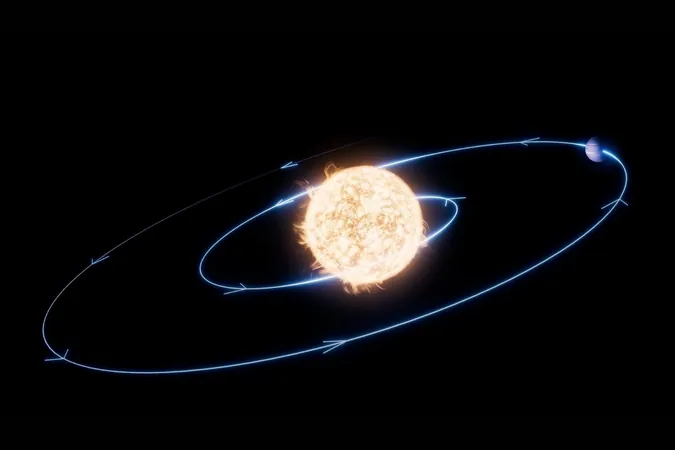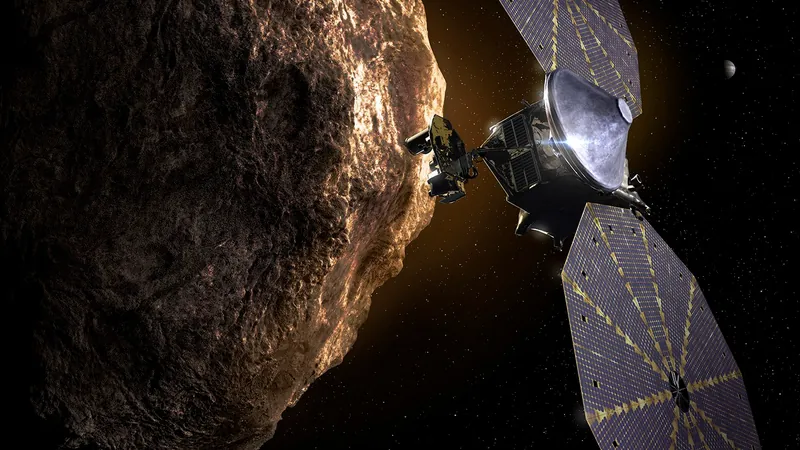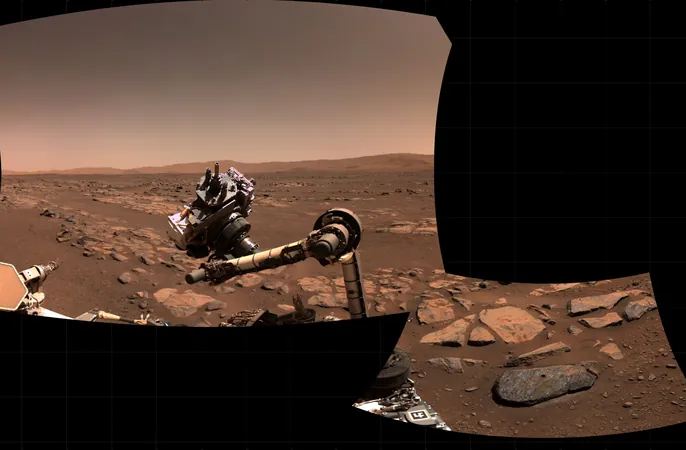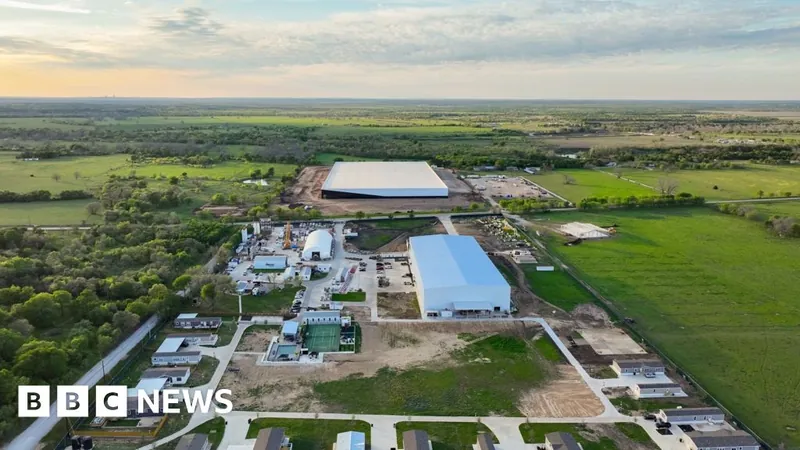
Webb Telescope Turns Astronomy on Its Head: Planetary Doom Unveiled!
2025-04-13
Author: Jacob
Get ready to rewrite the cosmic narrative! Astronomers utilizing NASA’s revolutionary James Webb Space Telescope have rocked the foundational beliefs about a dying planet, revealing a shocking new chapter in stellar evolution.
The Mystery of a Sudden Star Brightening
Previously, a brilliant light detected from a star over 12,000 light-years away was thought to signal a classic cosmic event: a star swelling into a red giant and devouring a nearby planet. This dramatic scenario seemed almost typical in the universe—until the Webb Telescope took a closer look.
A Closer Look with the Webb Telescope
Using its advanced Mid-Infrared Instrument (MIRI) and Near-Infrared Spectrograph (NIRSpec), Webb dug deep into the aftermath of this celestial event. To everyone’s surprise, the host star—dubbed ZTF SLRN-2020—was far from losing its temper; it seemed surprisingly composed. Instead of dramatic expansion, astronomers discovered a much darker fate for the nearby planet.
A Planet on a Fatal Path
The research team found that this unfortunate, Jupiter-sized exoplanet was spiraling ever closer to its blazing star, much closer than Mercury is to our Sun. Over millions of years, this perilous orbit tightened until the planet skimmed the star’s atmosphere. According to co-author Morgan MacLeod, astrophysicist at the Harvard-Smithsonian Center for Astrophysics, it began to "smear" its material around the star before ultimately crashing into it in a fiery finale.
Implications for Our Understanding of the Cosmos
This groundbreaking study was featured in The Astrophysical Journal, and lead author Ryan Lau highlighted the significance of this unexpected finding: "We were unsure what we might discover when we pointed this stellar tool towards the anomaly. With Webb’s high-resolution infrared capabilities, we’re gleaning essential insights into what might be the eventual fates of planetary systems, including perhaps our own future."
A New Perspective on Planetary Catastrophes
The planet's dramatic demise likely triggered the brightening that first captivated astronomers. This phenomenal observation revises the existing understanding of the first instance where a star actively devoured a planet—a narrative no longer confined to myth.
The Future is Bright for Cosmic Discoveries
This mind-bending discovery is part of Webb’s Target of Opportunity program, designed to capture unexpected cosmic phenomena. With future telescopes like the Vera Rubin Observatory and Nancy Grace Roman Space Telescope on the horizon, we can anticipate an influx of similarly awe-inspiring tales about the transient lives of planets in the universe.









 Brasil (PT)
Brasil (PT)
 Canada (EN)
Canada (EN)
 Chile (ES)
Chile (ES)
 Česko (CS)
Česko (CS)
 대한민국 (KO)
대한민국 (KO)
 España (ES)
España (ES)
 France (FR)
France (FR)
 Hong Kong (EN)
Hong Kong (EN)
 Italia (IT)
Italia (IT)
 日本 (JA)
日本 (JA)
 Magyarország (HU)
Magyarország (HU)
 Norge (NO)
Norge (NO)
 Polska (PL)
Polska (PL)
 Schweiz (DE)
Schweiz (DE)
 Singapore (EN)
Singapore (EN)
 Sverige (SV)
Sverige (SV)
 Suomi (FI)
Suomi (FI)
 Türkiye (TR)
Türkiye (TR)
 الإمارات العربية المتحدة (AR)
الإمارات العربية المتحدة (AR)